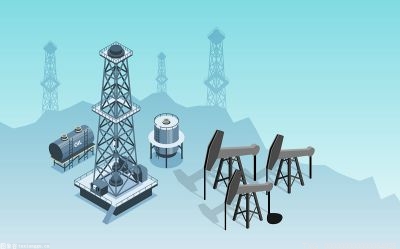这是什么超级充电宝?中国这些储能方式太厉害了!|全球速递
几乎人人都有银行的储蓄账户,可是你听说过可以储存能量的账户吗?
随着中国持续推进新能源普及,提高新能源利用效率,储能发展步入快车道。
 (资料图片仅供参考)
(资料图片仅供参考)
China"s power storage industry is experiencing rapid growth as the country continues to move toward a more sustainable energy mix, with renewables taking up an increasing share.
那么什么是储能?为什么要发展储能?储能有哪些重要形式呢?
风力太阳能综合发电厂 图源:视觉中国
储能系统就像是一个巨大的银行储蓄账户,它不断地存入能源,当我们需要时,随时准备提供给我们。
这个巨大的能量账户不仅能确保我们随时有足够的能源,还能让我们减少对化石燃料的依赖。就像我们的储蓄账户能够帮助我们应对意外的经济困难,储能系统也能帮助我们应对能源紧张的情况。
储能有多种形式,例如锂电池、抽水蓄能等。随着大量新能源并网发电,储能系统在确保能源供应的可靠性和稳定性方面发挥着至关重要的作用。
Energy storage is the process of retaining energy in a system for later use. This can be accomplished through various methods such as batteries, pumped hydro, and other means. Energy storage systems play a crucial role in ensuring the reliability and stability of energy supply, especially in renewable energy systems.
能量富余的时候吸收,需要的时候释放,这听起来是不是与手机充电宝很相似?
不同的是,手机充电宝容量小,连接的往往是小型电子设备,而储能设备这一“超级充电宝”则动辄放电上亿千瓦时,连接电网和更大的用户端。
以全世界装机规模最大的河北丰宁抽水蓄能电站为例,自2021年底首批机组投产以来,已有七台机组相继投产发电,累计发送绿色电力14.32亿千瓦时。按每户家庭每月用电量250度来计算,河北丰宁抽水蓄能电站一年发电量可供近50万个家庭一年用电。
Take Hebei-based Fengning Pumped Storage Power Station for example. It has the largest installed capacity in the world. Since 2021, seven units have been put into operation, which generated a total of 1.4 billion kilowatt-hours of green power. Based on the monthly power consumption of roughly 250 kWh per household, this amount of electricity can supply power for nearly 500,000 households for a year.
河北丰宁抽水蓄能电站下水库 图源:新华社
为什么在过去的煤电时期,储能呼声小很多呢?因为对于火电来说,电厂发电和设备用电是实时对应的,即用多少电发多少电,而用电预测则是通过电网的电力调度控制中心等部门来实现。在此时期,储能不仅需求小,而且成本高,是一笔很不划算的“买卖”。
In the past, fossil fuels like coal were virtually the only source of electricity, and many grid operators did not store energy because it could be an expensive undertaking. Instead, grid operators had dispatch centers that consistently managed supply to meet demand, and would burn additional coal to ramp up power generation during peak hours.
而随着新能源大量并网发电,“储能”变得至关重要。大部分新能源间歇性和随机性强,在需要时并不总是可用。这很容易理解:刮风不稳定,晚上太阳不出来,但是人总是要用电。
这种情况下,“规划安排”电力供应变得非常困难。没有储能,很可能发的电用不了,多余的要被丢弃掉,或者发的电不够用。
However, as concerns about climate change and resource depletion grew, the focus of power generation is gradually shifting towards renewable energy resources such as solar and wind. The problem with these modalities is that they are intermittent and not always available when needed. That"s easy to understand. Wind is not stable and sunlight is unavailable after dark, making it extremely difficult to manage power supply. That"s why energy storage becomes important. It helps bridge this gap by retaining energy when it is available and releasing it when needed.
敦煌熔盐塔式光热发电站全景 图源:视觉中国
来听听来自厦门大学的中国能源政策研究院院长林伯强教授怎么说吧:
储能有多种形式,每种形式都有自己的优缺点。一些常见的储能形式包括:锂电池、抽水蓄能等。锂电池多用于小规模储能的场景,例如电动车等。而抽水蓄能则适用于大规模储能场景,例如风电、光伏等。
"Differing from fossil fuels, new energy power generation has higher requirements for the safe and stable operation of power systems. That"s because most new energies are intermittent resources, which undergo sudden and random fluctuations. This makes it difficult to realize stable and steady power generation. In addition, it presents challenges to grid stability, such as voltage fluctuations, during power transmission," said Lin Boqiang, head of the China Institute for Studies in Energy Policy at Xiamen University in Fujian province. There are various forms of energy storage systems, each with its own advantages and disadvantages. Some of the most common forms include lithium-ion batteries, which are widely used in consumer electronics and electric vehicles, and pumped storage hydropower, which is currently the major means of storing massive power generated from solar and wind.
目前,新型储能、抽水蓄能、公共充电桩、储能电池、电池材料等已被列入多省2023年工作重点。
广东发布的2023年政府工作报告中称,将加快储能电池项目落地建设,大力发展新型储能产业,探索储能融合发展新场景,加快推进粤港澳大湾区碳市场建设。
福建称将加快新型能源体系规划建设,推进漳州核电1-4号机组、福厦特高压、智能配电网、抽水蓄能电站等项目。
重庆称将加快海辰储能西南智能制造中心等项目建设,推进新能源与新型储能相互促进、协同发展。
福建漳州核电2号机组内穹顶吊装 图源:人民网
从多省市地区的规划来看,抽水蓄能是发展储能的重要环节。
据中国能源研究会储能专委会下属中关村储能产业技术联盟数据,截至2022年底,中国已投运的电力储能项目累计装机达5940万千瓦,同比增长37%。其中,抽水蓄能占据最大比重,累计装机达4610万千瓦。
抽水蓄能的原理是什么呢?
一般来说,抽水蓄能建立在长斜坡上,有上下两个水库。当发电量大于实际使用量,多余的电能就会被转化为势能,即抽水从下水库至上水库。当发电量小于实际使用量,水会从上水库流至下水库,势能又重新转化为电能。
Pumped storage facilities have two water reservoirs at different elevations. The facility pumps water from the lower reservoir to the upper reservoir when there is excess power on the grid, and releases water to let it flow back downhill to generate power when there is greater demand for electricity.
抽水蓄能电站运行原理示意图 图源:人民日报
据水电水利规划设计总院数据,2021年全国已建抽水蓄能装机容量3639万千瓦,居世界首位,较2020年增长490万千瓦,同比增长15.6%。
The total installed capacity of pumped storage hydropower in China increased 15.6 percent year-on-year to 36.39 million kW by the end of 2021, ranking tops in the world, according to the China Renewable Energy Engineering Institute.
随着技术装备提升,应用成本下降,以及持续的利好政策,抽水蓄能装机规模将不断增长。据总院预测,到2025年我国抽水蓄能电站装机容量将达到6200万千瓦。
According to estimates from the institute, total installed capacity of pumped storage hydropower will reach 62 million kilowatts in China by 2025.
记者:刘玉坤 郑欣
X 关闭

 这是什么超级充电宝?中国这些储能方式太厉害了!|全球速递
这是什么超级充电宝?中国这些储能方式太厉害了!|全球速递
 宁波银行董秘回复:请发邮件至公司董事会邮箱,由工作人员查询后
宁波银行董秘回复:请发邮件至公司董事会邮箱,由工作人员查询后
- 这是什么超级充电宝?中国这些储能方式太厉害了!|全球速递
- 宁波银行董秘回复:请发邮件至公司董事会邮箱,由工作人员查询后
- 1月新增居民存款超6万亿,超额储蓄背后说明了什么?
- 蒙古人一家聚集在一起,上厕所跟洗澡不会尴尬吗?姑娘说出答案 每日消息
- 当你从我眼前慢慢走过是什么歌名_当你从我眼前慢慢走过是什么歌 每日资讯
- 全球快播:井冈山在哪里
- 2月13日基金净值:华富强化回报债券(LOF)最新净值1.72,涨0.12%
- 意大利有那些著名画家 世界头条
- 环球观天下!罗博特科接待长江证券等多家机构调研
- 送老婆什么礼物
- 双鹭药业:长效立生素评审状态显示为暂停是疫情因素评审工作受到影响超过时限导致 实际仍在继续评审-全球动态
- 微晶的正确使用方法_微晶该怎么用
- 韩娱热议: 宋仲基公开新婚之家-宋慧乔新房,网友疯狂吐槽-当前最新
- 快播:珠海九洲港至三角岛航线正式开通
- 遵义政府定价景区价格一览(2023年)|观察
- 天天时讯:腻子工是做什么的_腻子工
- 2022年网络热词排行榜_热词排行榜
- 真不是演的!《狂飙》涉毒演员凌晨道歉
- 【天天新视野】法院宣判后对于交罚款是什么规定
- 送朋友礼物应该送什么|前沿资讯
- 形容月光的唯美句子(合集428句) 焦点精选
- 烈箭鹟闪光_烈箭鹟
- 祭红釉
- 全球热讯:算法工程师是什么专业毕业_算法工程师是做什么的
- 羊水破了怎么办最快的方法_羊水破了怎么办
- dat文件是什么文件_ntuser dat是什么文件
- 轿车/SUV/MPV/纯电啥都有2021年北京现代新车规划
- 今年流行什么短款外套 小个子不能错过|环球热门
- 韩旭个人简历身高是多少_韩旭 最新资讯
- 新世代大战略游戏Grey Eminence已发布Alpha内测预告片-环球观察
- 沈复浮生六记经典语录
- 天天资讯:使用小红书推广如何精准引流?
- 山石网科: 山石网科通信技术股份有限公司2022年年度业绩预告 当前快看
- 许家印不放弃广州队!郑智继续执教 仍低成本运营 全球热文
- 2022年11月18日今日绿宝桶装色拉油价格走势批发行情
- 全球热文:零跑c11增程版预售15.98-20万元
- 果铁夫加盟路特斯,出任公关总经理市场高级总监_今日观点
- 中性粒细胞低淋巴细胞高怎么回事咳嗽_中性粒细胞低淋巴细胞高是怎么回事-短讯
- 店家是什么意思解释一下_店家是什么意思
- 淳化县气象台发布大雾黄色预警【Ⅲ级/较重】【2023-02-10】
- 年终总结,零跑汽车股价引发轰动-即时焦点
- 世界播报:微信定位怎么弄
- 政府网来送什么礼品好_世界报道
- 当前信息:白菜类黑斑病
- 天天观点:麦克风有电流怎么办_麦克风有电流怎么办
- 幸存女孩的日记之邮箱里的信件(都市怪谈)
- 中国同学录网_关于中国同学录网的介绍
- 天天消息!安利一波无法抗拒的 自己制作的创意礼物
- 当前滚动:97年属牛女最佳婚配年龄 25岁以后结婚合适
- 乌海市海南区:重点项目开工忙 奋力冲刺“开门红”
- 无缘对阵皇马了..比达尔赛前晒对利雅得新月预热照,梅西点赞_每日短讯
- 全球最新:win7游戏全屏怎么设置_win7游戏全屏
- 世界最资讯丨黄发是个傻子全集剪辑_黄发傻子是什么电视剧
- 02月09日09时云南玉溪疫情数据 阳了以后为什么会腰疼?应该怎么办? 环球短讯
- 古代会宁是指现在的哪座城市 金上京会宁府遗址介绍-全球关注
- 新闻1+1丨土耳其强震,中国救援在行动!
- 天天热推荐:欣贺股份2月9日打开涨停
- 观察:中山百强企业排名2020 中山企业100强名录
- 班得瑞最好听的20首曲子_班得瑞最好听的曲子
- 今日热闻!国家级暴雪预警继续,大范围雨雪进入最强阶段!预报:30多省要下
- 2022全国新高考Ⅰ卷数学卷完整试题及答案一览最新
- 环球观速讯丨酱板鸭_酱
- 好想好想歌词赵薇 全球观速讯
- 全球速看:涟源农商银行召开2023年“开门红”工作推进会议
- 万年县气象台发布大雾黄色预警信号【III级/较重】【2023-02-08】-即时看
- 天天动态:鬼雨作品_鬼雨
- 英雄联盟为什么无法观战_LOL无法观战的原因分析 天天热资讯
- 明周道行梓橦帝君图轴_对于明周道行梓橦帝君图轴简单介绍 全球时讯
- 悍马糖干嘛的_悍马能量糖为什么不让卖
- 环境保护从我做起主题班会教案精选十篇 环球今亮点
- 今天最新消息 新疆石化企业成功开发高难度技术新品
- 吉林艺术学院是几本大学_吉林艺术学院几本
- 十万个为什么读后感 微速讯
- 当前简讯:地球大气层解剖图_地球大气层
- 一度电是多少千瓦时等于多少毫安_一度电是多少千瓦时-焦点热门
- 【全球聚看点】羽毛球混双技巧大盘点
- 韩总统尹锡悦闭门接见日本议员联盟代表团
- 每日速读!东方海外(ADR)(OROVY.US)2月7日收盘报87.18美元/股,涨2.48%
- 巴菲特首谈比特币 投资比特币实在太危险了
- dnf合成传说_dnf合成传说_快消息
- 【世界报资讯】蝴蝶是益虫还是害虫
- 《狂飙》“盲盒式”拍戏,导演不给全剧本,演员只能自己加戏 环球新消息
- 环球微头条丨PPP与法律咨询
- 每日焦点!翠色欲流是描写什么的
- 今年美食行业三大趋势
- 今日视点:邹市明打过几场职业比赛_邹市明为何参加职业赛
- 淳中科技(603516.SH):“智能视音频管控系统产业化项目”等4个募投项目结项|每日看点
- 广西南宁:警民合力救援 8分钟成功营救跳桥轻生女子
- 天天酷跑炫飞模式在哪
- 一y二次方程求根公式_二次方程求根公式-世界视点
- 天天视讯!【道天录】元宵活动全面分析!张道陵快速获取方法!
- 数钱图片_数钱-当前信息
- 行政复议申请书模板通用版_行政复议申请书模板 全球观热点
- 中锋打法梦幻脚步_中锋打法
- 【世界聚看点】高薪+高额提成!节能、增效、降成本,名牌增氧机,诚邀英才加盟
- 云度云兔预制量产车下线:定位十万级纯电SUV,2月底正式上市
- 环球热点评!最新杭州2022单位社保缴费表_杭州社保多少钱一个月
- 上海云安建筑装潢设计有限公司
- 国美回应“黄光裕失去国美零售控股席位”:持股比例有望提升
- 今热点:铁甲风暴







